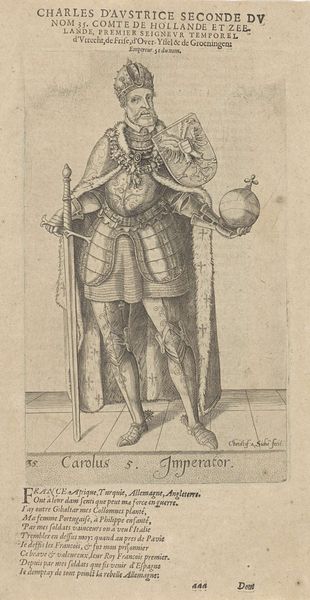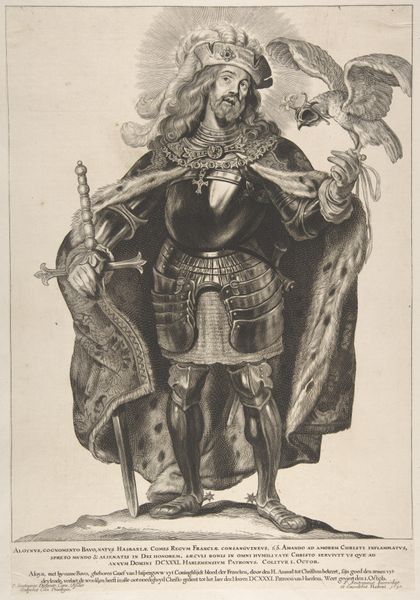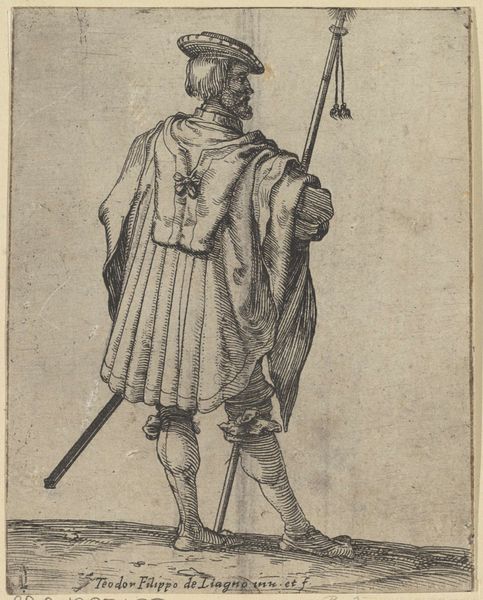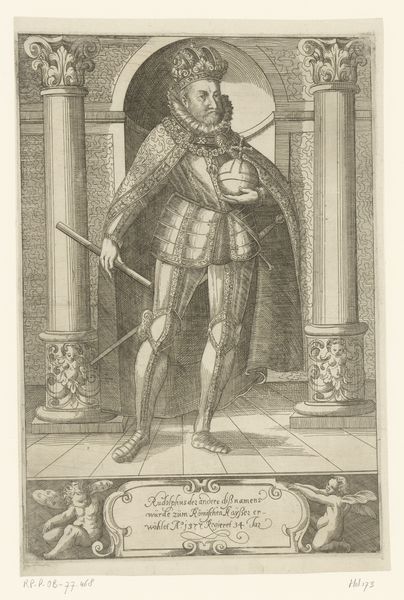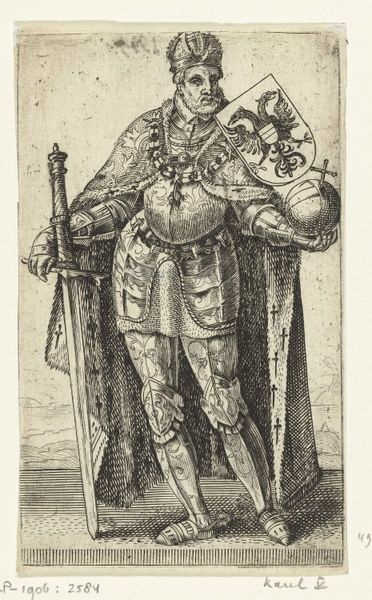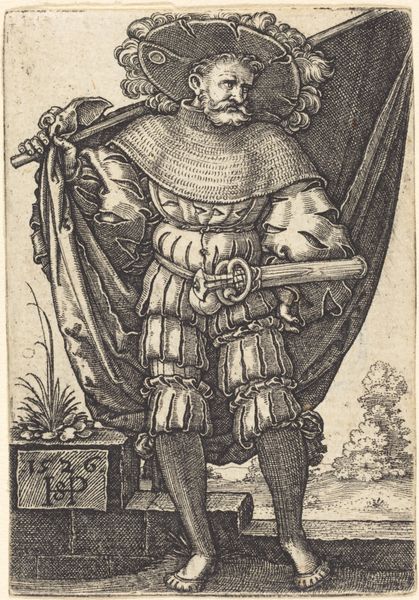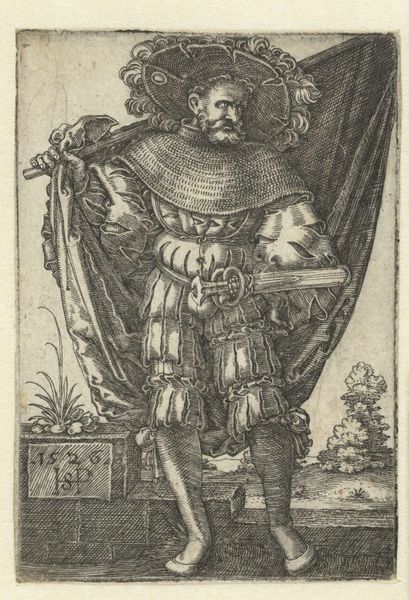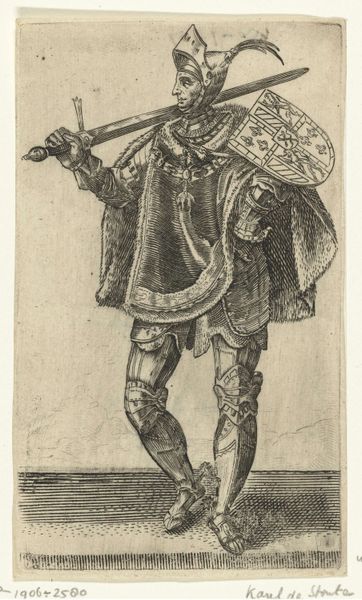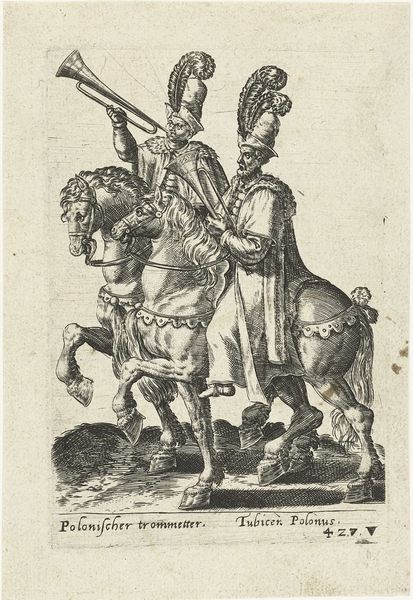
Maximilian I, from Herberstain, Rerum Moscoviticarum Commentarii 1546
0:00
0:00
drawing, print, engraving
#
drawing
# print
#
figuration
#
men
#
line
#
history-painting
#
armor
#
northern-renaissance
#
engraving
#
sword
Dimensions: Sheet: 6 7/8 × 5 9/16 in. (17.5 × 14.2 cm)
Copyright: Public Domain
Editor: So, this is Augustin Hirschvogel’s engraving, "Maximilian I, from Herberstain, Rerum Moscoviticarum Commentarii," made in 1546. It’s an impressive portrait of a man in full armor, wielding both a sword and what looks like a scepter. I'm curious about the sheer level of detail, but also how this image was reproduced at the time. What catches your eye in this print? Curator: I'm drawn to how the material reality of its production intersects with its intended message of power. This wasn't just an artistic endeavor; it was a commercial one, part of a book intended to inform and shape opinions about Maximilian I. The engraving itself – the labor involved, the copperplate used, the dissemination of the printed image – all speak to the material conditions that allowed for the construction and distribution of his image. How do you think the choice of engraving as a medium would have impacted the audience? Editor: I guess the relatively low cost and the ability to produce many copies would make this accessible to a broader audience than, say, a painted portrait? It feels almost like early propaganda, leveraging reproducibility. Curator: Precisely! And think about the artisanal skill involved. Each line, each shadow meticulously etched, reflects not just Hirschvogel’s talent, but also the social standing of printmaking at the time - somewhere between craft and fine art. That decorative armour is more than just ornamentation; it represents economic investment, a display of resources made tangible through the engraver's craft. What does that contrast between armor and engraving suggest to you about our current moment of technological images and the culture of their labor? Editor: It’s fascinating to consider the parallels. The materials, techniques, and labor are central to its message, and speak to how it reached its audience. It really reframes my understanding of its significance. Curator: Exactly, and thinking about art in this way - through the lens of its production and consumption – makes us more aware of how cultural power operates, then and now.
Comments
No comments
Be the first to comment and join the conversation on the ultimate creative platform.

